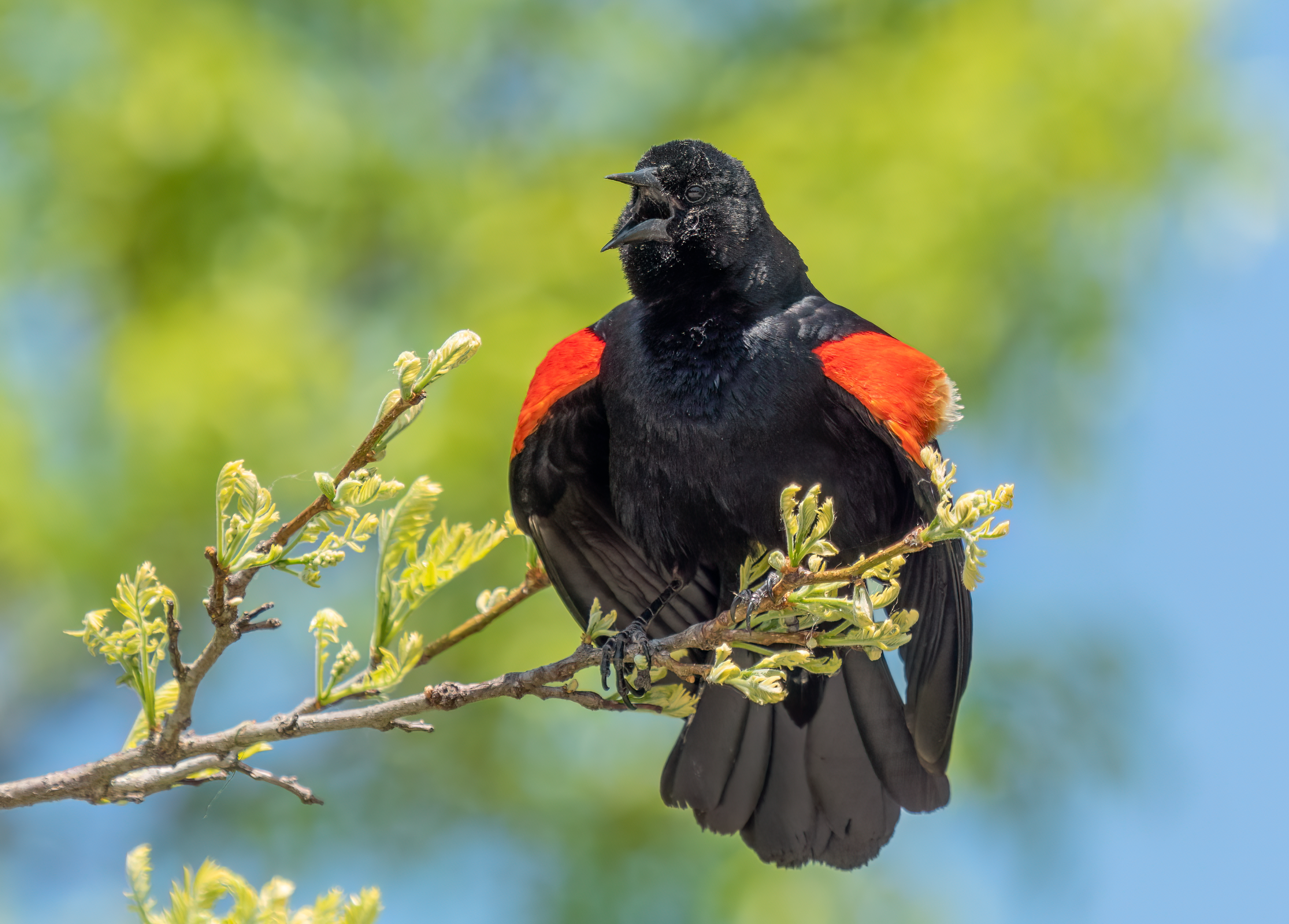It’s hard to get an exact set of syllables that mimic or illustrate a bird song. We attach words like the robin’s “cheerily cheerily cheer up cheer up” or the white-throated sparrow’s “O Canada Canada,” but it’s not exact. We keep trying to get it just right. One of the most familiar and recognizable birdsongs for me is set out as “conkeree” or “o-ka-leeee.” However you spell it, it’s the red-wing blackbird (Agelaius phoeniceus). On a day in late February, the familiar song drifted on the wind as at least one male red-wing blackbird arrived to set up housekeeping for the summer.
During the winter, he probably stayed in a large flock of birds, including grackles, starlings, cowbirds and blackbirds. In some areas in the south, flocks of thousands may inhabit fields, marshes and open woods eating grain and insects. Come spring, the male red-wing blackbirds fly north to their breeding grounds. They stake out their territories, chasing other birds away, singing their signature songs and calls from high in the trees.
A few weeks later, when the males are established, the females arrive. The females look more like sparrows than their male counterparts. Their feathers and beak are dark brown with well-defined streaking. They’re lighter on the underside, and have a somewhat paler breast. They have a whitish eyebrow which differentiates their looks from the sparrows they so closely resemble. This coloration has everything to do with camouflage.
Males and females are about the same size, with wings spanning 12 to 16 inches and an overall weight of 1.1 to 2.7 ounces–about the size of a robin.
Male red-wing blackbirds are not monogamous. In fact, they may have a harem of up to 15 mates (more commonly five) in a season. They court their ladies, breed and then sit high in a tree singing their challenge to any intruder, including me, while the female quietly goes about weaving a deep, basket-like nest near the ground. She prefers to place her nest in cattails or reeds if she’s in a marsh, or in a bush or similar cover if she’s at the edge of a field. While he goes on bloviating high above, she lays three or four eggs, incubates them for about 11 days until they all hatch, and then feeds them insects, especially dragon flies, damsel flies, moths, butterflies, and true flies. A couple weeks later, the nestlings leave the nest and, still under their mother’s care, join a flock of females. This schedule allows the female to mate a second and third time in a season, raising two more broods. For each brood she will build a new nest, a practice which cuts down on parasites. She may mate with her original partner, or with another male in the vicinity.
Her ability to raise two or three broods in a season helps to counteract the reality that by building her nest close to the ground, she is more likely to experience predators who will destroy the nest and eat the eggs and nestlings. Owls, hawks, marsh wrens, magpies, and raccoons are fond of red-wing blackbird nests.
Red-wing blackbirds are perhaps the most ubiquitous of our summer birds. Population estimates range from 150 to 180 million birds in North America. They are found throughout the U.S. and as many as 20 subspecies have been identified and catalogued. The birds that visit Owl Acres are the all-black-wit-red-shoulder-patches-outlined-in-yellow type.
To me, there are few birdsongs that are as identifiable and familiar as the song of the red-wing blackbird. Soon we’ll hear them on our walks, especially down by the creek. They will follow us on the walk, swearing at us, as they try to drive us away from their nests. They’ll sing all day long, filling the world with summer song.
Photo from Wikimedia.org. Alt text: A Red-Wing Blackbird sits on a twig and yells at the neighbors. Black songbird with crimson epaulets at the shoulders.

1 comment
We had lots of these birds growing up on the farm, but I have not seen any since leaving there!!